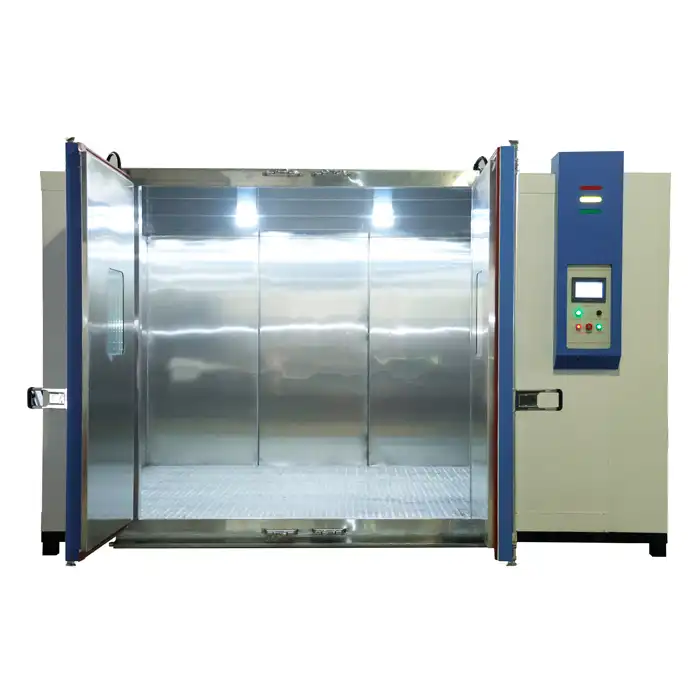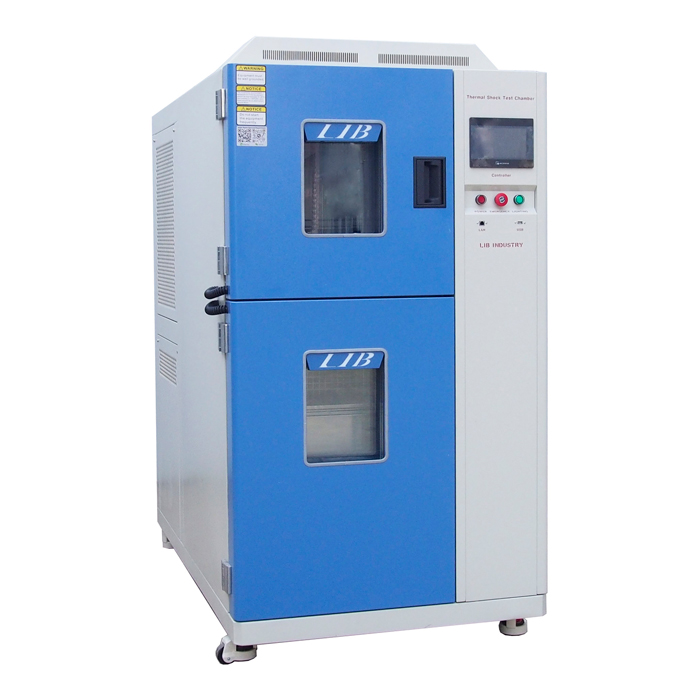Enhancing Solar Panel Durability: The Role of Solar Panel Environmental Chambers
Solar panels are exposed to various environmental conditions, such as extreme temperatures, humidity, UV radiation, and corrosive elements. Ensuring solar panel durability in the face of these challenges is essential to meet energy production requirements over time. Solar panel environmental chambers replicate harsh environmental conditions, enabling manufacturers to test and enhance the durability of their solar panels.

How Controlled Environments Mimic Harsh Conditions for Solar Panel Testing?
Solar panels are often installed in diverse and unpredictable climates, from scorching deserts to freezing tundras. To ensure panels can withstand these conditions, solar panel environmental chambers are designed to replicate extreme environments. These chambers simulate a range of stress factors, including fluctuating temperatures, humidity levels, and UV radiation.
By controlling these variables, engineers can observe how solar panels respond to long-term exposure to harsh elements in a matter of weeks or months. This form of testing helps manufacturers identify vulnerabilities in the design or materials that might degrade under specific conditions. The ability to mimic real-world environments allows manufacturers to make improvements before panels are installed in the field, ensuring they perform reliably across various climates.
How Environmental Chambers Uncover the Factors Affecting Solar Panel Lifespan?
Environmental chambers are instrumental in uncovering the factors that directly impact the lifespan of solar panels. One primary factor is thermal cycling, where panels undergo rapid temperature changes. For example, a panel might face freezing temperatures at night, followed by scorching heat during the day. These temperature swings can cause materials to expand and contract, potentially leading to micro-cracks in the cells. Environmental chambers simulate these cycles to measure the panel's resistance to such damage.

Temperature change curve of solar panel temperature cycling test
Another factor is humidity and moisture. Solar panels in high-humidity environments are susceptible to water ingress, which can lead to corrosion and reduced efficiency over time. By subjecting panels to controlled humidity levels in the chamber, manufacturers can assess their ability to resist moisture-related degradation.
Additionally, UV exposure is a critical factor in determining how long the materials in a solar panel can withstand sunlight without degrading. Continuous UV radiation testing in solar panel environmental chambers reveals how the panel's encapsulation and coatings protect it from long-term exposure to sunlight. These insights are essential for developing panels that can maintain optimal performance over decades.
Translating Chamber Data into Real-World Durability Predictions for Solar Panels
Data generated in environmental chambers provides valuable insights into how solar panels will perform in real-world conditions. By analyzing this data, manufacturers can make informed predictions about the long-term durability and efficiency of solar panels.
For instance, after exposing panels to thermal cycling and UV radiation in the chamber, engineers can estimate how well the panel will fare after 20 or 30 years in the field. The data collected helps in creating mathematical models that predict the degradation rate of panels over time. This information is crucial for investors and companies looking to maximize the return on their solar energy projects.
Moreover, testing results can reveal failure points in specific materials or designs, allowing manufacturers to enhance the panel's construction or select more durable materials for future models. The ability to translate chamber data into real-world predictions is a key benefit of environmental testing, ensuring that solar panels meet industry standards and last for decades.
The Value of Accelerated Testing Methods in Solar Panel Chambers
The use of accelerated testing in solar panel environmental chambers is highly valuable for manufacturers seeking to bring products to market more quickly. Instead of waiting for years to see how solar panels will hold up under natural conditions, accelerated testing compresses decades of wear and tear into a shorter period.
For instance, a test simulating 2000 hours of UV exposure in a chamber can provide insights equivalent to several years of outdoor exposure. Similarly, accelerated thermal cycling and humidity testing allow engineers to evaluate panel durability in a fraction of the time it would take in the field.
Accelerated testing is not only time-efficient, but also cost-effective. It allows manufacturers to identify weaknesses early in the development process, reducing the risk of product failure once the panels are deployed. By using these methods, companies can fine-tune their products and ensure they meet performance expectations, saving both time and resources in the long term.
LIB Solar Panel Environmental Chamber
LIB Industry offers state-of-the-art solar panel environmental chambers that are designed to meet the rigorous demands of solar panel testing. These chambers are highly customizable, allowing manufacturers to simulate a wide range of environmental conditions, including extreme temperatures, humidity, UV exposure, and more.
| Model: PV-04 Temperature Range: -60℃ ~ +100 ℃ |
One of the key advantages of LIB's solar panel environmental chambers is their precision and reliability. Equipped with advanced control systems, these chambers ensure consistent and accurate simulation of environmental conditions. This level of precision allows manufacturers to test solar panels under strict conditions that mimic real-world environments, ensuring that the final product is durable and reliable.
In addition to temperature and humidity control, LIB's chambers also feature UV-testing capabilities, which are essential for evaluating how solar panels withstand prolonged exposure to sunlight. The chambers are designed to accommodate various sizes of solar panels, making them ideal for both small-scale and large-scale testing.
LIB Industry is committed to providing a turn-key solution for environmental testing. From research and design to installation and training, LIB offers a comprehensive service to ensure customers get the most out of their solar panel environmental chambers. For more information, you can contact us at ellen@lib-industry.com.
References
1. R. C. Weiner, "Accelerated Testing in Photovoltaic Modules: Simulation and Real-World Correlation," Solar Energy Materials & Solar Cells, 2021.
2. B. Meyer, "Environmental Stress Testing for Solar Panels: Critical Insights for Longevity," Journal of Renewable Energy Technology, 2023.
3. M. T. Hansen, "Predictive Modeling of Solar Panel Durability Based on Environmental Chamber Data," International Journal of Energy Research, 2022.
4. J. P. Thompson, "UV Exposure and Solar Panel Degradation: Findings from Controlled Environment Testing," Journal of Photovoltaic Science, 2020.




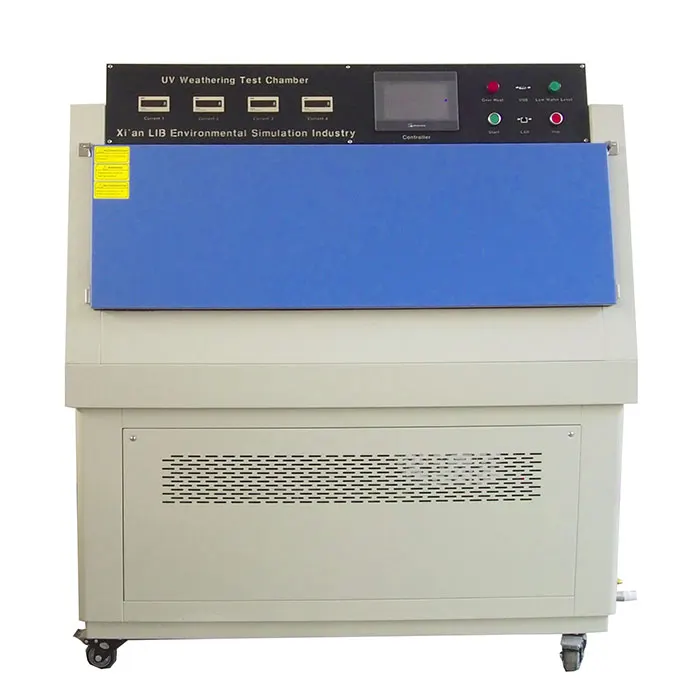
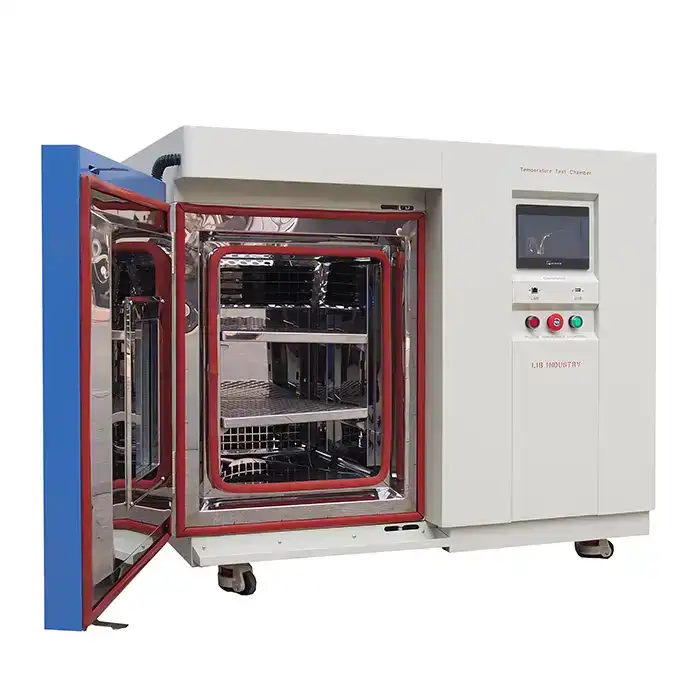
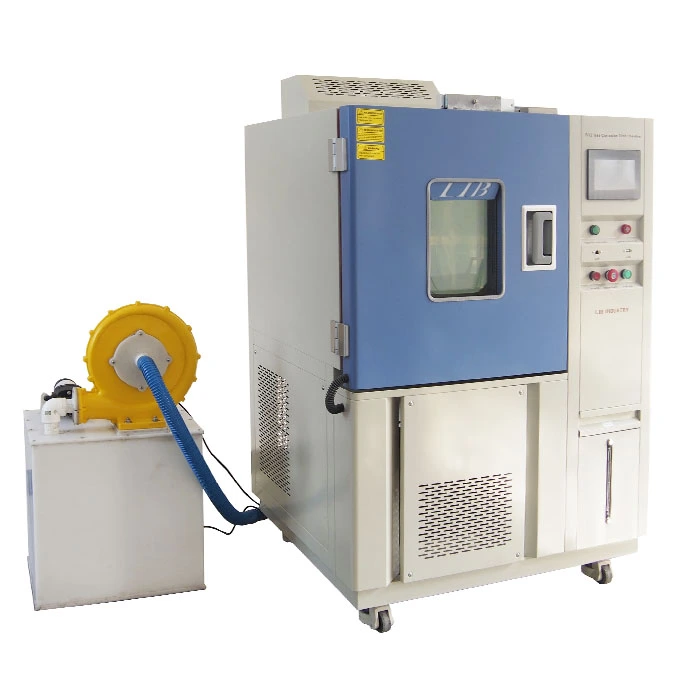
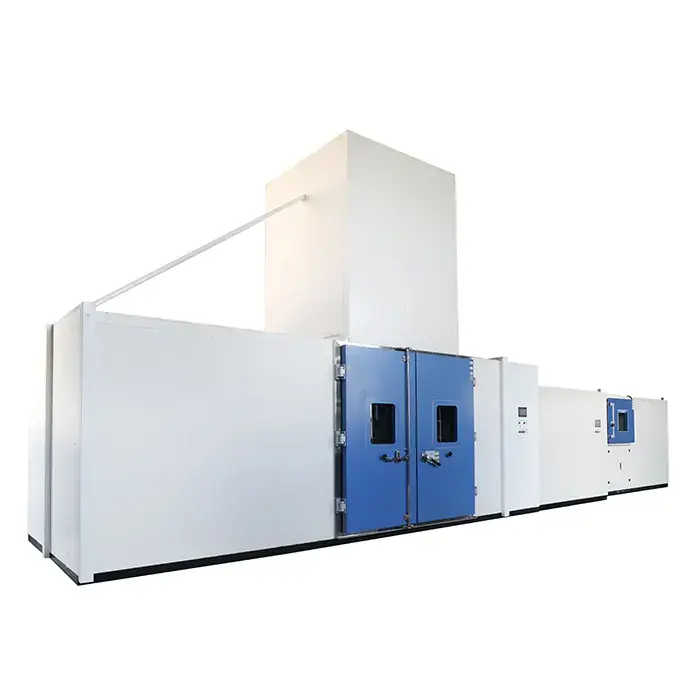
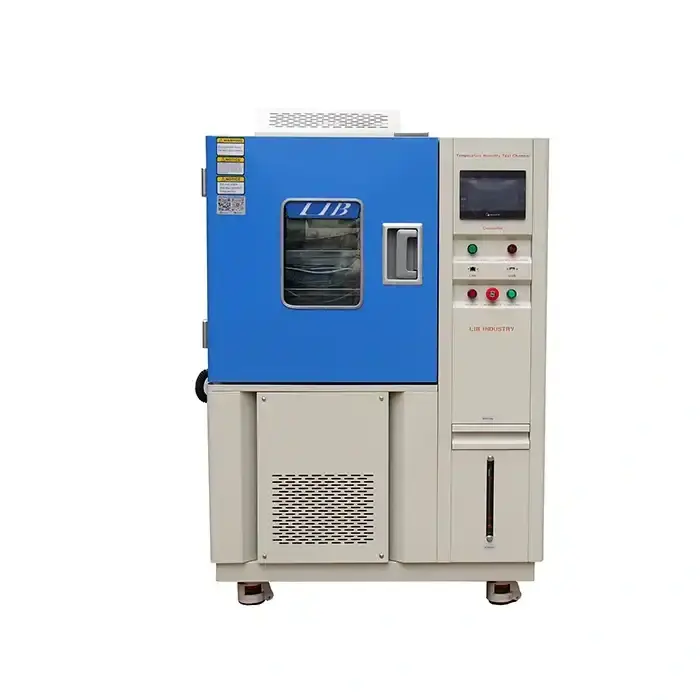
.webp)
